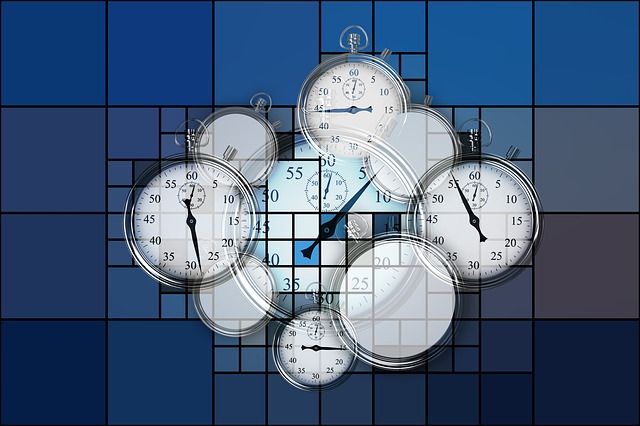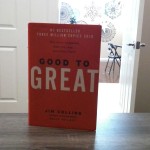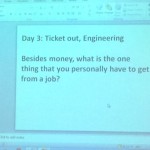Monday was the first day of the second semester of my first year teaching high school since I was a student teacher in 1987. At the beginning of the first semester, I wrote here about what questions I had and then here about how it was going. Although I’m still enjoying the new assignment, by winter break, the work of learning new material and teaching in a new school to a new age level combined with the regular teaching load, had taken a toll.
My biggest goof was failing to develop a good work-flow routine that included both professional and personal responsibilities. By the end of the semester the stress was even impacting my sleep, which is rare for me. Note that none of this had anything to do with Covid. If we had never heard of the pandemic, I’d still have been in exactly the same place. So, over the break I decided to go all in and make a New Year’s Resolution to establish routines that would best enable me to make non-instructional time at school and personal time away from school count more.
Here’s what I mean by making time count more. On a typical weekend, one of two things would happen. If I was “on”, I’d wake up early on Saturday and complete some personal or professional task right away and then take a long break. Having that accomplishment under my belt, I’d enjoy the break more, be up for another task, and the cycle would repeat. At the end of the weekend, I’d feel rested and renewed and ready for the week ahead. But too often, I was “off”. I’d have a first task in mind for when I woke up but find a way to avoid it. Then, if I tried to do something that should be relaxing, I’d feel anxious and not enjoy myself. Once a weekend started this way, it would pretty much continue. When Monday came, I’d not be ready, emotionally or practically, for the work week.
(As an aside, in a conversation with family over the break, we imagined a graph on which the horizontal axis measures how much work a task takes and the vertical axis measures how much work it takes to avoid it. The greater the ratio of avoidance work to actual work is, the greater the anxiety and stress that results.)
To rework my habits I’ve mashed-up self-management tools I know. First, I remembered a professional development activity from long ago. You start by identifying an end behavior you want to improve. For me, it is to be more consistent and predictable. Then you identify a causal behavior that results in the end behavior. To be more consistent and predictable, I must first practice the routines I decide upon. But I can’t decide upon a solid routine until I’ve tried, evaluated, and tweaked a few options. But that can’t happen unless I assess the consequences of my current behaviors and see how they’ve become good or bad habits.
The advantage of this chain of cause and effect is that it enables you to build a bridge across the gap between your current state and desired state instead of trying to leap across it. (Please, if any readers have seen this activity and know who made it up, let me know so I can direct others to the original resource.)
The 12 Week Year: Get More Done in 12 Weeks than Others Do in 12 Months is a long-range planning tool recommended to me by Randi Fielding. The claim in the book’s title might be an exaggeration, but any 12 weeks I follow the plan are more productive and less stressful than any 12 weeks I don’t. Basically, you categorize a handful of areas in which you have work to do. For example, I go with: Home Maintenance, Professional Excellence, Personal Finances, and Holistic Health. Then, you identify intermediate tasks in each area, with deadlines spread over the 12 weeks, that must happen to reach the goal. Each week you select a workable group of the intermediate tasks to work on. Finally, each day you make up a classic to-do list. (You can find templates online to help you organize your plan.) The 12 week tool functions quite well because of the way it blends short term, intermediate term, and long term time horizons.
Two last tools can be used to reinforce each other. The first, which I’ve heard of in several places is “swallow the frog” – get an annoying task done first thing in the morning and get it out of the way. The second, for which I’ll take credit, is “do something easy and then something else.” Here’s how it works in practice. Say, it’s Saturday morning and I’m still in bed. I need to clean the kitchen and grade tests from all my classes. Thinking about either of those tasks is enough to lead me to avoidance behavior. But thinking about only emptying the dishwasher (something easy) and only grading my smallest class (something else) makes me think that in less than an hour I can get two necessary tasks done and have a start for an “on” weekend described above.
If you’re like me and really like your work, but also need to overhaul your work-flow routines, I hope you’ve found some ideas here worth trying. At a minimum, give “something easy and something else” a go. And if you know any other tools or resources on this topic, please share.
(Image by Gerd Altmann from Pixabay)









